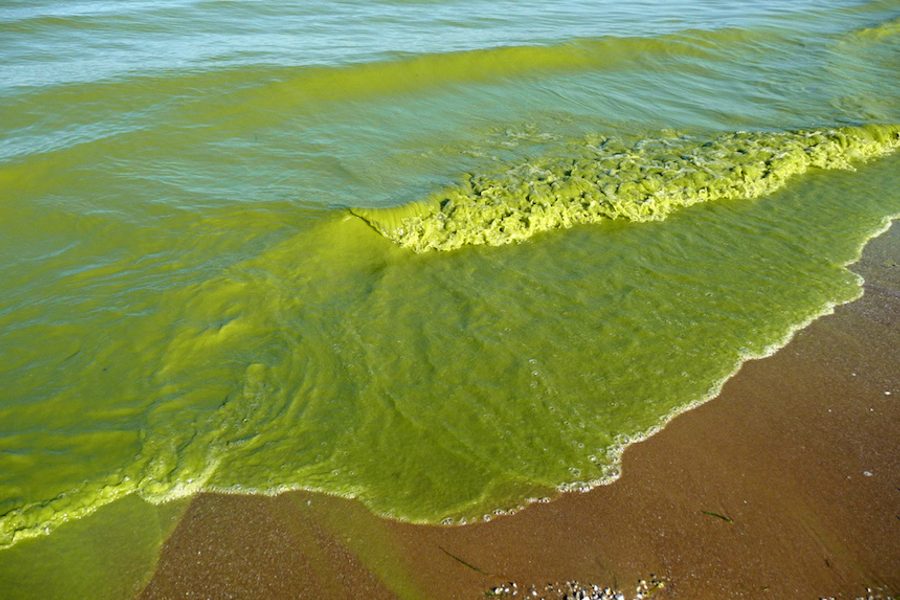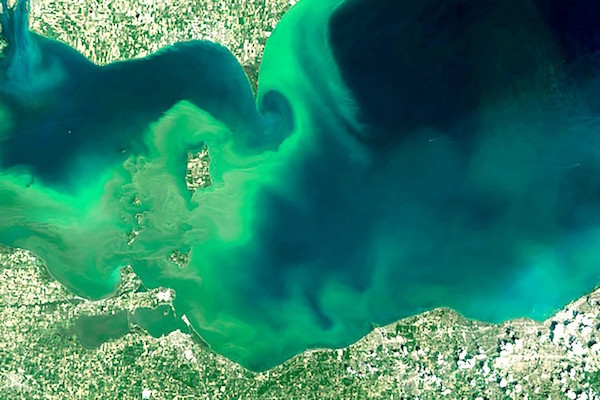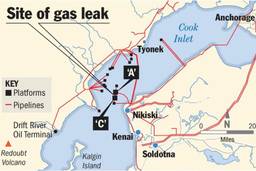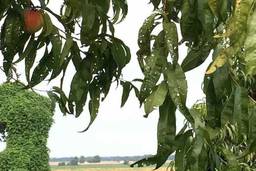
Glyphosate, the controversial main ingredient in Monsanto’s Roundup and other herbicides, is being connected to Lake Erie’s troubling algae blooms, which has fouled drinking water and suffocated and killed marine life in recent years.
Phosphorus—attributed to farm runoff carried by the Maumee River — has long been identified as a leading culprit feeding the excessive blooms in the western Lake Erie basin. Now, according to a new study from chemistry professor Christopher Spiese, a significant correlation has been established between the increased use of glyphosate to the percentage of dissolved reactive phosphorus (DRP) in the runoff.
As No-Till Farmer observed from the study, DRP loads in Lake Erie increased in the mid-1990s at the same time that farmers began the widespread cultivation of crops genetically engineered to withstand multiple applications of Roundup.
“For every acre of Roundup Ready soybeans and corn that you plant, it works out to be about one-third of a pound of P [phosphorus] coming down the Maumee,” Spiese told the agricultural publication.
Here’s how the team came to the conclusion, as No-Till Farmer reported:
Through his own and others’ research, Spiese found that depending on the types of metal in the soil, glyphosate does release P. For example, when glyphosate is applied to soil containing iron oxide-hydroxide, P is immediately released. But almost nothing is removed when it’s an iron oxide material.
Finally, Spiese took soil samples all over the Maumee watershed, applied P to them and then sprayed glyphosate to see how much P was released vs. soil that wasn’t sprayed with glyphosate after 24 hours. He saw desorption occurred all over the watershed, but certain areas were higher than others, specifically in the southeastern corner.
Based on the average two glyphosate applications growers make every year, Spiese estimates that overall, 20-25 percent of the DRP runoff is caused by glyphosate. But depending on the location within the watershed, that percentage could be much lower or much greater.
“Some of those sites, it’s less than a percent. Other sites it’s almost 100 percent,” he says.
Previous studies have tied glyphosate to the phosphorous fueling Lake Erie’s blue-green algae. In 2009, Ohio Sea Grant researchers, Drs. R. Michael McKay and George Bullerjahn of Bowling Green State University, found that glyphosate could only be detected in the lake at certain times of year — after crops are planted.
“Our research is finding that Roundup is getting into the watershed at peak farming application times, particularly in the spring,” McKay said.
Approximately 1,000 metric tonnes (about 2.2 million pounds) of Roundup is applied in the Lake Erie watershed per year, and it is being detected in adjacent waterways particularly in the spring, the Ohio Environmental Protection Agency (EPA) noted from McKay and Bullerjahn’s study.
The researchers also found that the blue-green algae (cyanobacteria) in the lake are capable of using phosophonates.
“It turns out that many cyanobacteria present in Lake Erie have the genes allowing the uptake of phosphonates, and these cyanobacteria can grow using glyphosate and other phosphonates as a sole source of phosphorus,” Bullerjahn said.

A satellite image of the 2015 Lake Erie algae bloom. (Photo: NOAA Great Lakes Environmental Research Laboratory)
Harmful Lake Erie blooms have increased at record levels over the last decade, according to the U.S. EPA and are expected to become more common due to warmer temperatures and heavy rainfall that feed algae growth.
The toxic algae rob oxygen from the waters creating dead zones where fish and other marine life are unable to survive. The algae is also a threat to humans — swallowing it can cause health problems such as rashes, vomiting, numbness and difficulty breathing.
In February this year, the United States and Canada announced a goal to reduce the amount of phosphorus entering affected areas of Lake Erie by a total of 40 percent by 2025.

A dead fish surrounded by algae in Lake Erie during a record-setting algae bloom in 2011. (Photo: Tom Archer / NOAA)
(This article was published on EcoWatch.com)







